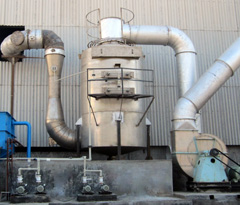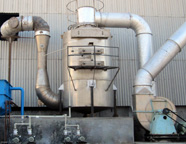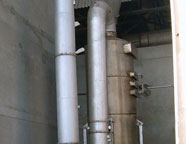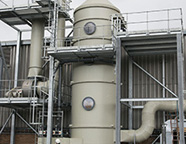WET SCRUBBER
Shimi Research Center Pvt Ltd is a leading Wet Scrubber Manufacturer in India. We manufacture state of the art Wet Scrubbers with high quality raw materials. Our product effectively removes pollutants, particulate matters and gases from polluted gas streams. For our distinctive product quality we are successfuly exporting wet scrubbers in different parts of the world. At present we are one of the leading exporters of Wet Scrubbers in Middle East and South Africa.
Wet scrubber refers to a variety of devices that remove pollutants, particulate matters and gases, from polluted gas streams. In a wet scrubber, the polluted gas stream is brought into contact with the scrubbing liquid, by spraying it with the liquid, by forcing it through a pool of liquid, or by some other contact method, so as to remove the pollutants.
Scrubbers can be designed to collect particulate matter and/or gaseous pollutants. The versatility of wet scrubbers allows them to be built in numerous configurations, all designed to provide good contact between the liquid and polluted gas stream.
Wet scrubbers remove dust particles by capturing them in liquid droplets. The droplets are then collected, the liquid dissolving or absorbing the pollutant gases. Any droplets that are in the scrubber inlet gas must be separated from the outlet gas stream by means of another device referred to as a mist eliminator or entrainment separator (these terms are interchangeable). Also, the resultant scrubbing liquid must be treated prior to any ultimate discharge or being reused in the plant.
A wet scrubber's ability to collect small particles is often directly proportional to the power input into the scrubber. Low energy devices such as spray towers are used to collect particles larger than 5 micrometers. To obtain high efficiency removal of 1 micrometer (or less) particles generally requires high energy devices such as venturi scrubbers. Additionally, a properly designed and operated entrainment separator or mist eliminator is important to achieve high removal efficiencies. The greater the number of liquid droplets that are not captured by the mist eliminator the higher the potential emission levels.
Wet scrubbers that remove gaseous pollutants are referred to as absorbers. Good gas-to-liquid contact is essential to obtain high removal efficiencies in absorbers. A number of wet scrubber designs are used to remove gaseous pollutants, with the packed tower and the plate tower being the most common.
If the gas stream contains both particle matter and gases, wet scrubbers are generally the only single air pollution control device that can remove both pollutants. Wet scrubbers can achieve high removal efficiencies for either particles or gases and, in some instances, can achieve high removal efficiency for both pollutants in the same system. However, in many cases, the best operating conditions for particles collection are the poorest for gas removal.
In general, obtaining high simultaneous gas and particulate removal efficiencies requires that one of them be easily collected (i.e., that the gases are very soluble in the liquid or that the particles are large and readily captured) or by the use of a scrubbing reagent such as lime or sodium hydroxide.
Ideally Suited for the Removal of:

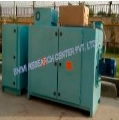 An Ultimate Electrostatic-filter for the extraction and control of oil mist, fumes and dust in the work environment. Shimi Research Center Pvt. Ltd. with its expertise in the field of pollution control equipment introduces the highly efficient, compact, indoor filtering system, IONVENT®, to suit various customer needs.
An Ultimate Electrostatic-filter for the extraction and control of oil mist, fumes and dust in the work environment. Shimi Research Center Pvt. Ltd. with its expertise in the field of pollution control equipment introduces the highly efficient, compact, indoor filtering system, IONVENT®, to suit various customer needs.

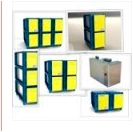 A Kitchen scrubber is a smaller and more compact size of the industrial scrubber specifically designed for restaurants and hotels where the volume of pollution is low and limited to particulate matter, oil odor and mist.
A Kitchen scrubber is a smaller and more compact size of the industrial scrubber specifically designed for restaurants and hotels where the volume of pollution is low and limited to particulate matter, oil odor and mist.
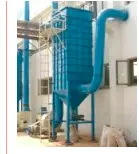
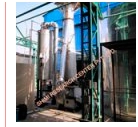
 Shimi Research Center Pvt Ltd is a leading Centrifugal Blower manufacturer in India. We manufacture Centrifugal Blower with best quality
Shimi Research Center Pvt Ltd is a leading Centrifugal Blower manufacturer in India. We manufacture Centrifugal Blower with best quality
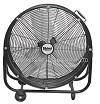 Shimi Research Center Pvt Ltd is among the first company in India to develop this kind of Circulation Fans..
Shimi Research Center Pvt Ltd is among the first company in India to develop this kind of Circulation Fans..
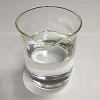 Methyl methacrylate (MMA) is an organic compound with the formula CH2=C(CH3)COOCH3. This colorless liquid, is a monomer produced on a large scale for the production of poly(methyl methacrylate - PMMA).
Methyl methacrylate (MMA) is an organic compound with the formula CH2=C(CH3)COOCH3. This colorless liquid, is a monomer produced on a large scale for the production of poly(methyl methacrylate - PMMA).
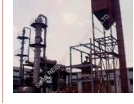 Shimi Research Center Pvt Ltd is a leading Supplier of Acrylic Plastic Waste Cracking Unit in India and supply abroad. We provide the complete ...
Shimi Research Center Pvt Ltd is a leading Supplier of Acrylic Plastic Waste Cracking Unit in India and supply abroad. We provide the complete ...
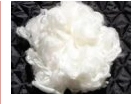 Shimi Research Center Pvt Ltd is the only company in the world till date to provide Acrylic Fibre Recycling Technology/Expertise. We provide all the necessary technical know-how on ...
Shimi Research Center Pvt Ltd is the only company in the world till date to provide Acrylic Fibre Recycling Technology/Expertise. We provide all the necessary technical know-how on ...
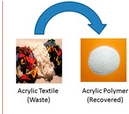 Shimi Research Center Pvt Ltd is the only company in the world till date to provide Acrylic Textile Waste Recycling Technology/Expertise...
Shimi Research Center Pvt Ltd is the only company in the world till date to provide Acrylic Textile Waste Recycling Technology/Expertise...

